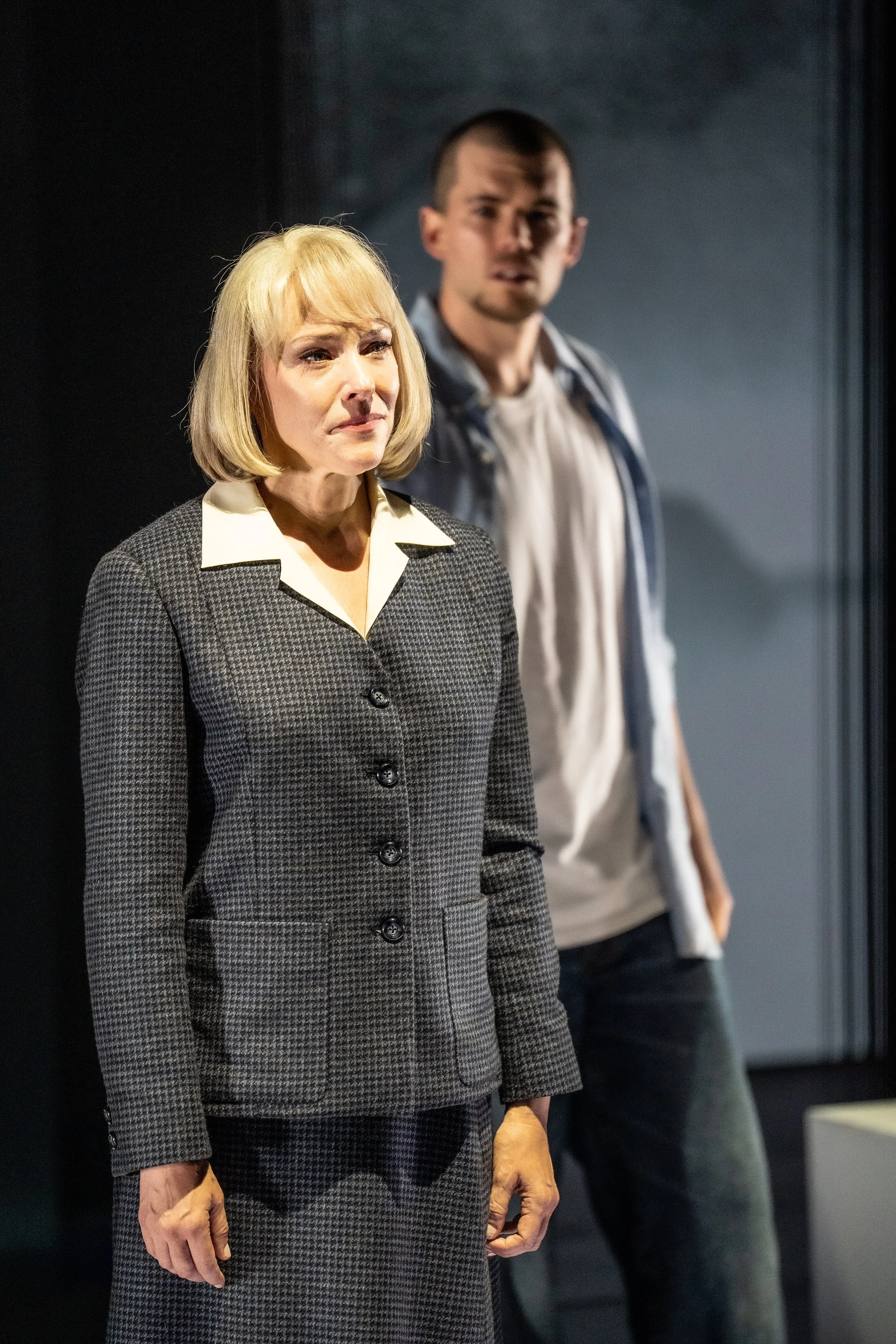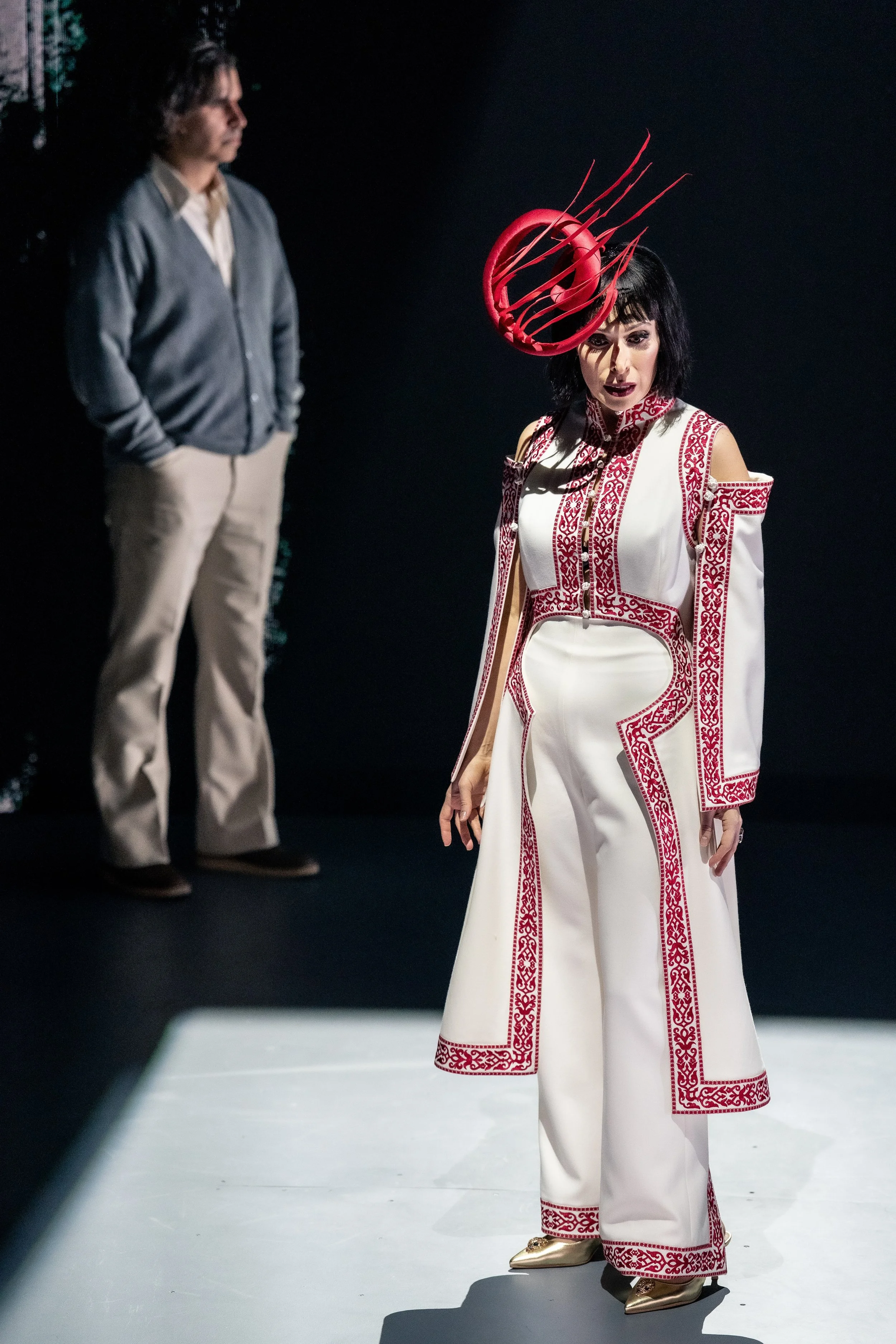Little Boy Blue: A review of “House of McQueen”
As another iteration of New York Fashion Week winds down, it seems a fitting time to bring to the stage the story of one of fashion’s most visionary designers. The short life of Alexander McQueen (Lee to family and friends), from his apprenticeship as a tailor on Savile Row to his graduation from Central Saint Martins, to launching his own fashion house and heading Givenchy, was one of ceaseless imagination. McQueen made an indelible mark on the fashion world, creating a slew of signature pieces, including the origami frockcoat, the low-cut “bumster” trousers, the armadillo shoe, and ubiquitous '00s wardrobe staples that are back on trend again, thanks to Charli XCX and Timothée Chalamet.
In House of McQueen, playwright Darrah Cloud sets out to dramatize, in not entirely linear fashion, the meteoric rise and subsequent unravelling of the designer. The play hits all the major beats of his life, from his East London origins as the son of a cab driver to his place in the pantheon of fashion before taking his own life at the age of forty.
As the inaugural production of The Mansion at Hudson Yards, the show makes use of the cavernous former event space. The stage is mostly bare, with two platforms that raise and lower and floor-to-ceiling LED walls with projections that augment the action, including archival footage of McQueen’s runway shows (sets by Jason Ardizzone-West video and projection design by Brad Peterson).
Bridgerton star Luke Newton, dressed out in oversized white tee, baggy jeans, scuffed trainers, and employing a working-class East London accent, makes a credible and compellingly watchable Lee McQueen: a jumble of ambition and anxieties with a chip on his shoulder and an open heart. Broadway veteran Emily Skinner grounds the production as his mother, Joyce. It’s their bond that provides the emotional gravity of the show, taking central focus until the arrival of fashion editor and McQueen muse Isabella Blow (Catherine LeFrere) amps up the proceedings like a bump of coke.
Under the direction of Sam Helfrich, the rest of the company plays various roles, including Jonina Thorsteinsdottir as McQueen’s supportive sister who doesn’t always understand her brother’s singular vision, and Margaret Odette as a fashion reporter who functions as antagonist and chorus during the rise of McQueen’s public figure.
As a creative force, McQueen was a study in polarities: he explored the tension between craft and art, tradition and imagination, the natural world and the artificial, finding beauty in darkness. Part of the tragedy of McQueen’s life, the play suggests, is that he was not able to synthesize those two worlds in a way that brought him peace—to meld his extraordinary success with an ordinary existence. The play arguably exploits duality to aid viewers in understanding Lee the person and Alexander the persona. On the one side, there are the “party people,” the models, muses, and men who attach themselves as his star ascends, and on the other, his proper family. The danger, though, is that this style can become too didactic. We see the art versus commerce binary driven home twice: once at the end of act 1 when McQueen signs on to Givenchy, and revisited in act 2 when a louche, devilish Tom Ford, clad in a Gucci tux, seduces the sensitive, exploited genius with the promise of money for his own line.
Ostensibly a memory play, the fractured structure fails to locate the viewer in any concrete sense of time and place for too long. Some scenes feel too allusive, like the young Lee’s abuse at the hands of his sister’s boyfriend, while others are stated too plainly, as the ones that address his use of drugs and his HIV diagnosis. Interspersed throughout, there are scenes where mother and son communicate face to face on a television chat show, where Joyce is invited to interview her son, a storytelling conceit to allow insight into McQueen and his fondness and affection for his mother (in reality, the 2004 Q&A ran as a piece in the Guardian). Having the young McQueen cart his designs from Gigli in Milan to Central Saint Martins school in a garbage bag is a clever way to show the progression of geography and character, but other moments, like Lee dancing at a club or designing in his studio, are too short or disconnected to offer much depth.
The difficulty of biographical dramas is that they have to entertain the uninitiated, but not bore the devotee. It’s hard to thread the needle between pleasing both fans and neophytes while crafting a satisfying, dramatic narrative. Alexander McQueen suffered in many ways—a complicated individual who was also a public figure, a creative soul who wanted “everything, everything, everything.” It’s possible that too much care was given, and some of the less flattering parts of his personality were glossed over. Perhaps the impulse to underline his legacy necessitated the inclusion of the Curator (Fady Demian), based on Andrew Bolton, who assembled the Met Costume Institute’s Savage Beauty, which tips the narrative from biography into hagiography. In a posthumous address directly to McQueen, the Curator rationalizes putting the exhibition together, telling the designer, “I’ll say, your clothes will influence every designer who comes after you—because they’re art: they change the way we see, oh, everything, everything, everything. They make us feel like the world is all new and we’re so lucky to be alive in it.”
A collaborative exhibition, on view as a companion piece to the play, features twenty-seven archival McQueen pieces curated by Byronesque. The result is homage to a designer who transmuted the violence of life into singular works of beauty. Always a theatrical designer, McQueen imbued his work with history and autobiography in his choice of drape, cut, bias, and runway visuals. Perhaps it’s here that the true drama of Alexander McQueen is best understood.
House of McQueen runs off-Broadway at The Mansion at Hudson Yards through November 2, 2025.





